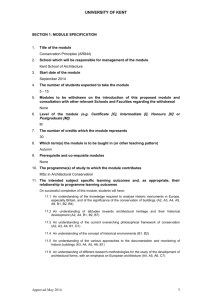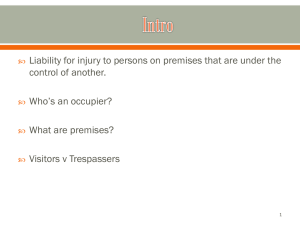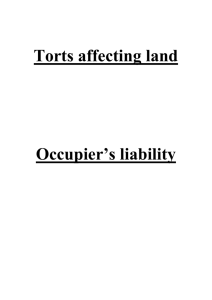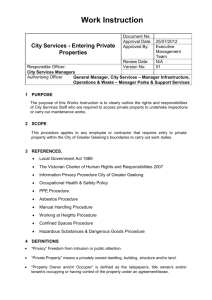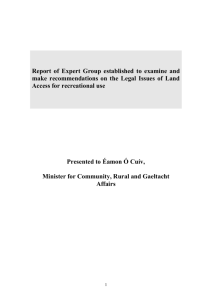A Guide to Protected Buildings
advertisement
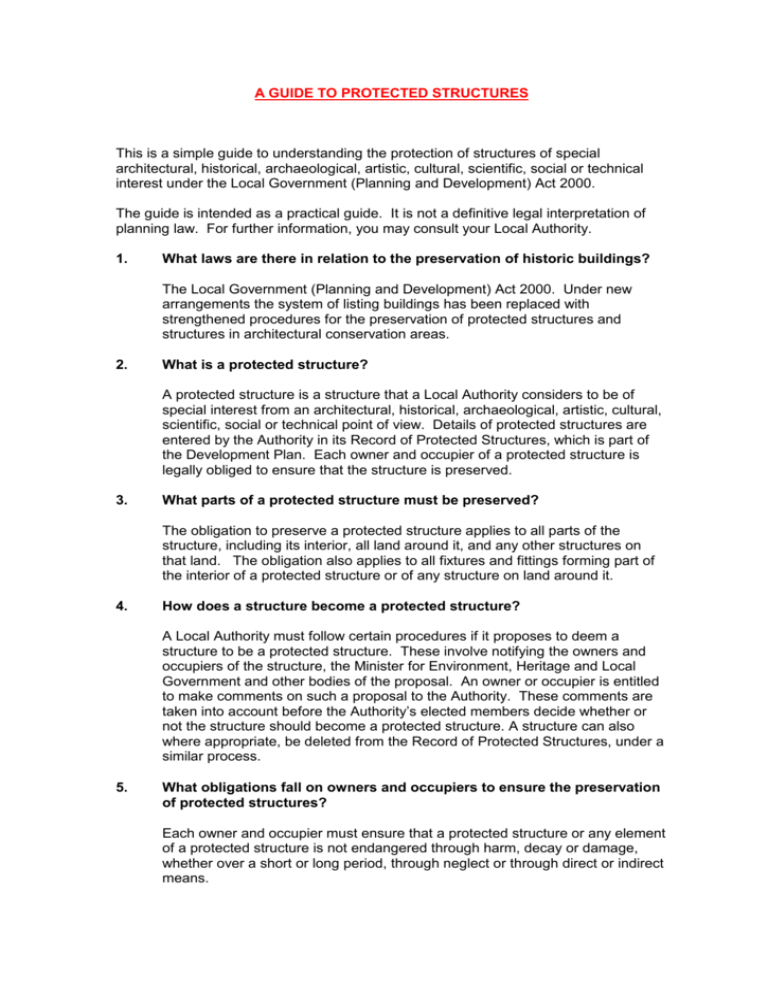
A GUIDE TO PROTECTED STRUCTURES This is a simple guide to understanding the protection of structures of special architectural, historical, archaeological, artistic, cultural, scientific, social or technical interest under the Local Government (Planning and Development) Act 2000. The guide is intended as a practical guide. It is not a definitive legal interpretation of planning law. For further information, you may consult your Local Authority. 1. What laws are there in relation to the preservation of historic buildings? The Local Government (Planning and Development) Act 2000. Under new arrangements the system of listing buildings has been replaced with strengthened procedures for the preservation of protected structures and structures in architectural conservation areas. 2. What is a protected structure? A protected structure is a structure that a Local Authority considers to be of special interest from an architectural, historical, archaeological, artistic, cultural, scientific, social or technical point of view. Details of protected structures are entered by the Authority in its Record of Protected Structures, which is part of the Development Plan. Each owner and occupier of a protected structure is legally obliged to ensure that the structure is preserved. 3. What parts of a protected structure must be preserved? The obligation to preserve a protected structure applies to all parts of the structure, including its interior, all land around it, and any other structures on that land. The obligation also applies to all fixtures and fittings forming part of the interior of a protected structure or of any structure on land around it. 4. How does a structure become a protected structure? A Local Authority must follow certain procedures if it proposes to deem a structure to be a protected structure. These involve notifying the owners and occupiers of the structure, the Minister for Environment, Heritage and Local Government and other bodies of the proposal. An owner or occupier is entitled to make comments on such a proposal to the Authority. These comments are taken into account before the Authority’s elected members decide whether or not the structure should become a protected structure. A structure can also where appropriate, be deleted from the Record of Protected Structures, under a similar process. 5. What obligations fall on owners and occupiers to ensure the preservation of protected structures? Each owner and occupier must ensure that a protected structure or any element of a protected structure is not endangered through harm, decay or damage, whether over a short or long period, through neglect or through direct or indirect means. 6. Do special procedures apply to protected structures under the planning system? Yes. Under the planning system, many minor works to structures do not normally require planning permission. These works are known as exempted development. However, for a protected structure, such works can be carried out without planning permission only if the works would not affect the character of the structure or any element of the structure that contributes to its special interest. Depending on the nature of the structure, planning permission could, for example, be required for interior decorating such as plastering or painting. 7. How does an owner or occupier know which works require planning permission? An owner or occupier of a protected structure may request the Local Authority to issue a declaration indicating the types of works that could be carried out without affecting the character of the structure or any element of the structure which contributes to its special interest. These works would not require planning permission. A Local Authority will, in general, issue such a declaration within three months of receiving a request. 8. How does an owner or an occupier apply for planning permission to carry out works to a protected building? A planning application involving a protected structure is generally made in the same way as any other planning application. However, additional information must be submitted with the application. The Local Authority will consult other bodies, including the Minister for the Environment, Heritage and Local Government and prescribed bodies before making a decision on the application. More information on applying for planning permission is contained in the leaflets on the planning system issued by the Department of the Environment and Local Government. 9. How do the new laws apply to buildings that are listed for preservation in a development plan before 1st January 2000? Where a building is specified as a listed building in a development plan immediately before 1 January 2000, that building automatically becomes a protected structure on that date. 10. Are there any measures in place to assist owners and occupier to preserve a protected structure? Yes. A scheme of grants is operated by Local Authorities, on behalf of the Department of the Environment, Heritage and Local Government, to assist the owner or occupier of a protected structure to undertake necessary works to secure its conservation. Applications are prioritised on the basis of its Scheme of Priorities. The standard amount of grant is 50% of the approved cost of works, up to a maximum of €13,000. A Local Authority may, at its discretion, vary this amount downwards or, in exceptional circumstances, upwards, subject to a maximum allowable grant of 75% of the approved cost of works, or €25,000, whichever is the lesser. Full details of the scheme are available from Dublin City Council, as follows: Telephone: 2223926; 2223927; 2225093. Web address: http://www.dublincity.ie/business_services/planning/conservation/ 11. Do Local Authorities have special powers in relation to protected structures? Yes. A Local Authority may : require an owner or an occupier of a protected structure to carry out works if it considers that the structure is or may become endangered; require an owner or an occupier of a protected structure to carry out works if it considers that the character of the structure ought to be restored; acquire, by agreement or compulsorily, a protected structure if it considers that this is desirable or necessary in relation to the protection of the structure. Where a Local Authority requires works to be carried out to prevent a protected structure from becoming or continuing to be endangered, the owner or occupier concerned may be eligible for a grant under the scheme of grants for the conservation of protected structures. 12. What is an Architectural Conservation Area? An Architectural Conservation Area is a place, area, group of structures or townscape which is of special architectural, historical, archaeological, artistic, cultural, scientific, social or technical interest or contributes to the appreciation of protected structures. This could include, for example, a terrace of houses, buildings surrounding a square, or any group of buildings which together give a special character to an area. An Architectural Conservation Area may or may not include protected structures. Planning permission must be obtained before significant works can be carried out to the exterior of a structure in an Architectural Conservation Area. 13. Are owners and occupiers liable to penalties if they fail to meet their obligations in relation to protected structures or structures in an architectural conservation area? Yes. A fine of up to €10,000,000 and €10,000 for each day of a continuing offence and/or a term of imprisonment of up to 2 years can be imposed on an owner or an occupier for – endangering a protected structure, or failing to carry out works, ordered by a Local Authority, to a protected structure or a structure in an Architectural Conservation Area. Copies of the legislation concerning: Protected Buildings; The Local Government (Planning and Development) Acts, 1963 to 2000 and the Local Government (Planning and Development) Regulations, 1994 to 2003 may be purchased from: The Government Publications Sales Office, Sun Alliance House, Molesworth Street, Dublin 2. Telephone: (01) 6613111. For more useful information, please contact: Department of the Environment, Heritage & Local Government. Telephone: 8882000. Web address: www.environ.ie Some helpful publications: Period House, A Conservation Guidance Manual, by Frank Keohane Architectural Heritage Protection, Guidelines for Planning Authorities – available from The Government Publications Sales Office, Molesworth Street or from the DOE website.
